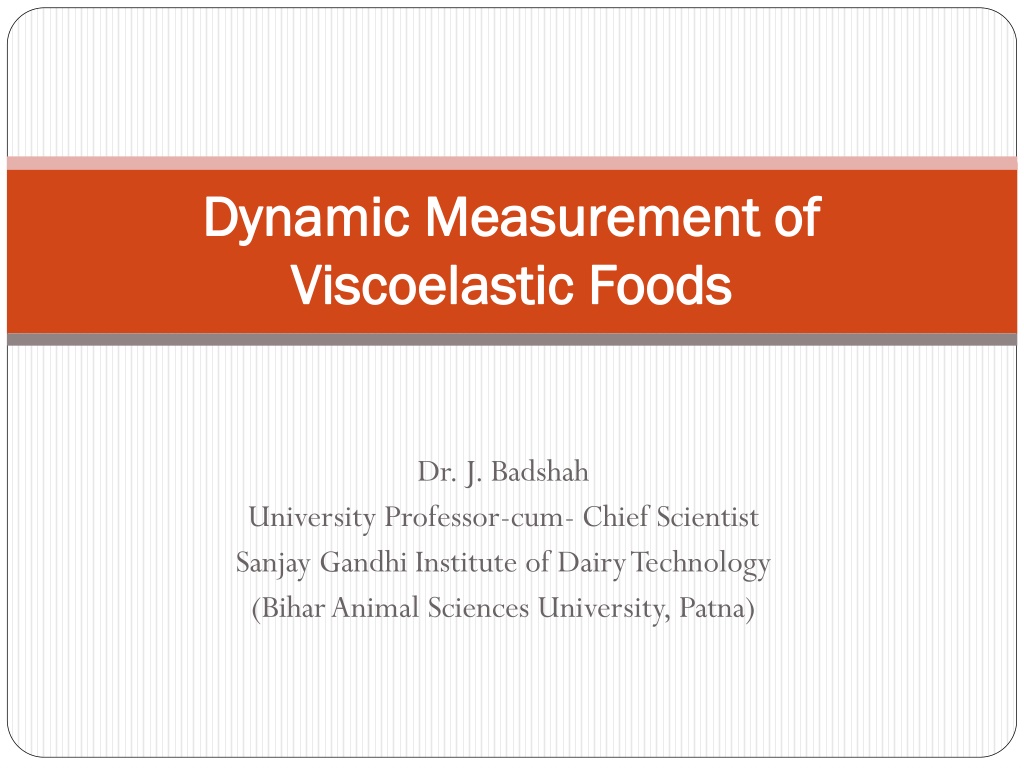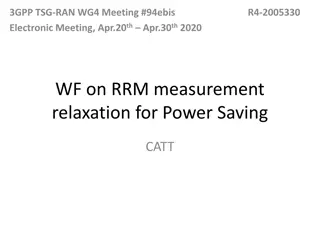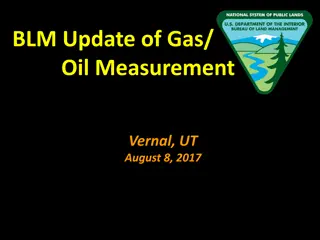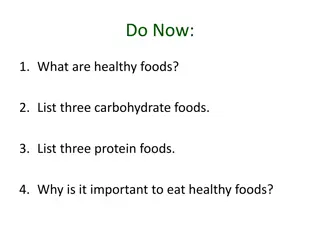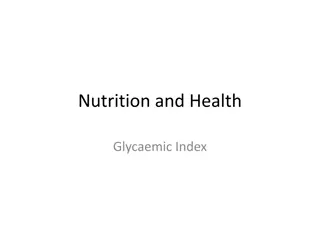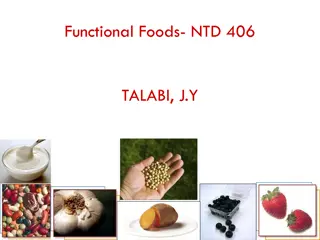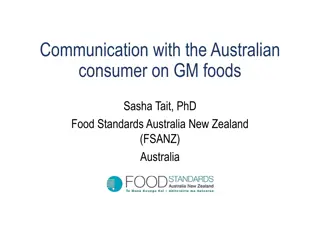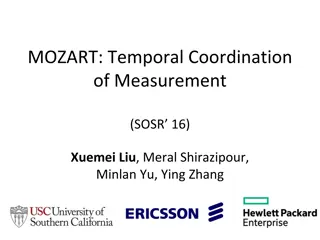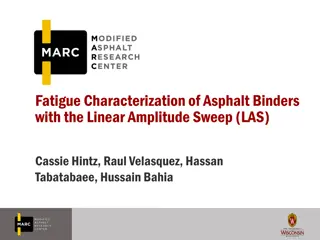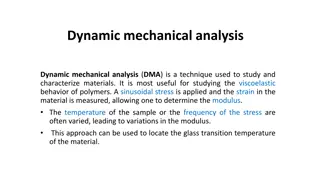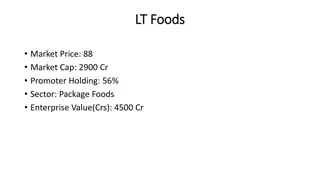Understanding Dynamic Measurement of Viscoelastic Foods
Viscoelastic foods exhibit time-dependent properties that can be measured using oscillatory mode in viscometers like cone and plate or parallel plate viscometer. The shear stress under oscillating mode provides insights into the material's viscosity and elasticity. Characteristics such as Wissenberg effect and Jet Swell are observed in viscoelastic fluids. Tests like Cure Test, Temp. Sweep, Strain Sweep, Frequency Sweep, and Stress Relaxation are conducted for dynamic mechanical analysis of these foods.
Download Presentation

Please find below an Image/Link to download the presentation.
The content on the website is provided AS IS for your information and personal use only. It may not be sold, licensed, or shared on other websites without obtaining consent from the author. Download presentation by click this link. If you encounter any issues during the download, it is possible that the publisher has removed the file from their server.
E N D
Presentation Transcript
Dynamic Measurement of Dynamic Measurement of Viscoelastic Foods Viscoelastic Foods Dr. J. Badshah University Professor-cum- Chief Scientist Sanjay Gandhi Institute of Dairy Technology (Bihar Animal Sciences University, Patna)
Cone and Plate Viscometer and Parallel Cone and Plate Viscometer and Parallel Plate Viscometer Plate Viscometer Oscillatory Mode Measurement: To measure time dependent viscoelastic properties of viscoelastic foods, Cone and Plate viscometer and Parallel plates viscometers are used in oscillatory mode. The lower plate is made to oscillate at a frequency of radian /second giving a sinusoidal varying strain in food materials kept on lower plate with a maximum amplitude of 0and strain of , which is = 0Sin t d /dt = 0 Cos t
Shear stress under oscillating mode Shear stress under oscillating mode The measurement on the upper plate also vary sinusoidly at the same frequency as the oscillation given to strain but it will be shifted out by an angle del ($) depending upon the elastic component: For Newtonian Fluid = ( d /dt ) = 0 Cos t = 0 Sin ( /2 + t ) Therefore del ($) = /2 for viscous fluid i.e. /2 radian out of phase with strain. For an Ideally Elastic solid, shear stress is in phase with strain and = G( ) shear stress is deduced for torque
Del for Del for Viscoelastic Viscoelastic Food Food For Viscoelastic material, in which viscosity and elasticity both are present eg. Milk Gel. Del has a value between 0 and /2. G ( ) = 0/ 0Cos (del)= Storage Modulus (This is elastic part of stress) G ( ) = 0/ 0Sin (del)= Loss Modulus(This is viscous Part of stress) Tan (del) = G (w) / G (w) G* Complex Modulus = [(G ( )2+ G ( )2]
Characteristics of Characteristics of Viscoelastic Viscoelastic Foods Foods Wissenberg Effect: On Agitation the fluid may climb the impeller haft Jet Swell: When viscoelastic fluid exit as a jet from a nozzle, it will swell or expand two or more times. Tubeless Syphon: Fluid tends to climb in the tube and comes out of cylindrical vessel.
Tests on Dynamic mechanical Analysis Tests on Dynamic mechanical Analysis Cure Test: In this test sample is hold at constant temperature and frequency Temp. Sweep: In this test, temp. is increased at a fixed frequency Strain Sweep: Increasing strain amplitude at a fixed frequency Frequency Sweep:Increasing oscillation a a fixed strain Sress Relaxation: Relaxation of the stress at the constant strain. It is used for Paneer, Cheese, Meat, Fruits pulp, Yoghurt, Dahi and Meat Paste/ Fish Paste,Vegetabl;es pulp etc. the frequency of
THANKS THANKS
